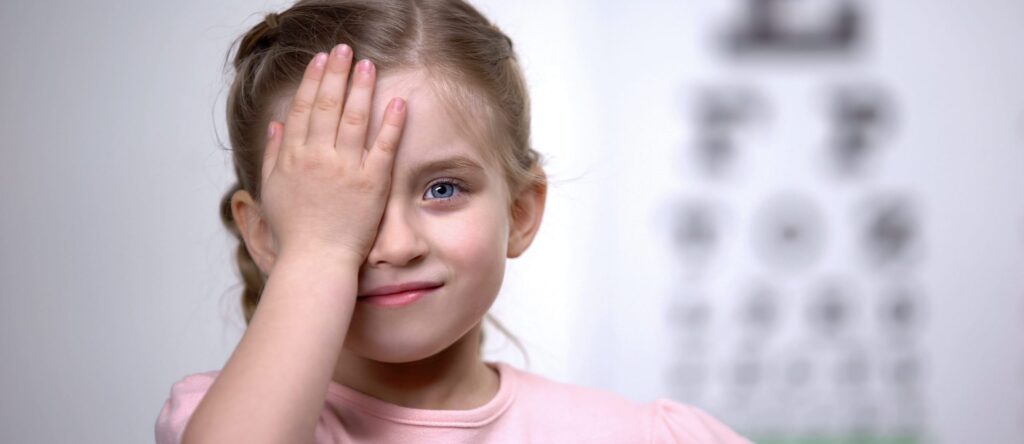Paediatric Eyecare
Pediatric ophthalmology is a branch of eye care that focuses on diagnosing and treating eye conditions in infants, children, and teenagers. It addresses issues like squint (strabismus), lazy eye (amblyopia), refractive errors, and congenital eye disorders. Children’s eyes are still developing, so early detection and treatment are crucial for healthy vision. Pediatric ophthalmologists use special tools and techniques designed for young patients. Their care helps support proper vision development and overall growth in children.

Why Early Vision Care in Children Matters
Detecting and treating vision problems in children early is essential for their long-term eye health and overall development. Good vision supports a child’s physical growth, learning ability, and social interaction. If left undiagnosed, vision issues can lead to struggles in school, behavioral challenges, and delays in development.
Parents, teachers, doctors, and caregivers all play an important role in spotting signs of vision problems early. Regular vision screenings help identify children who need professional eye care.
If not treated in time, vision disorders can affect a child’s future, education, and overall quality of life. Providing complete eye care—through awareness, screenings, follow-ups, and treatment—ensures every child gets the support they need to thrive.
Common Symptoms of Pediatric Eye Problems:
Trouble seeing clearly or reduced vision
Blurred vision at near or far distances
Difficulty focusing on objects
Problems with depth perception
Emotional or social challenges due to crossed or misaligned eyes or vision issues
Types of Paediatric Eyecare
Refractive Errors
Common vision problems in children such as myopia (nearsightedness), hyperopia (farsightedness), and astigmatism cause blurred vision due to incorrect focusing of light on the retina. These issues can affect learning and cognitive development.
Amblyopia (Lazy Eye)
A condition where one eye has reduced vision, often caused by misaligned eyes or untreated refractive errors during early childhood development.
Strabismus (Eye Misalignment)
Occurs when the eyes do not line up properly, leading to double vision or confusion and affecting depth perception. Types include esotropia (inward turning), exotropia (outward turning), hypertropia (upward), and hypotropia (downward).
FAQs
Pediatric Eye Care FAQs – American Laser Eye Hospitals, Hyderabad
Pediatric eye care focuses on the eye health and vision needs of infants, children, and teenagers. It includes diagnosing, treating, and managing childhood eye conditions to support healthy vision development.
Early detection and treatment of eye problems help prevent long-term vision issues, support learning, and improve overall development. Untreated vision problems can affect school performance and social growth.
Common issues include refractive errors like myopia (nearsightedness), hyperopia (farsightedness), astigmatism, amblyopia (lazy eye), and strabismus (eye misalignment).
Treatments may include glasses, eye patching, vision therapy, medications, or surgery depending on the condition. Early and proper treatment ensures better outcomes.
Children should have their first eye exam by 6 months of age, another at 3 years, and before starting school. After that, yearly or as recommended by the eye specialist.
We offer expert pediatric eye specialists, advanced diagnostic tools, and child-friendly care to ensure the best treatment for your child’s vision health in a comfortable environment.
